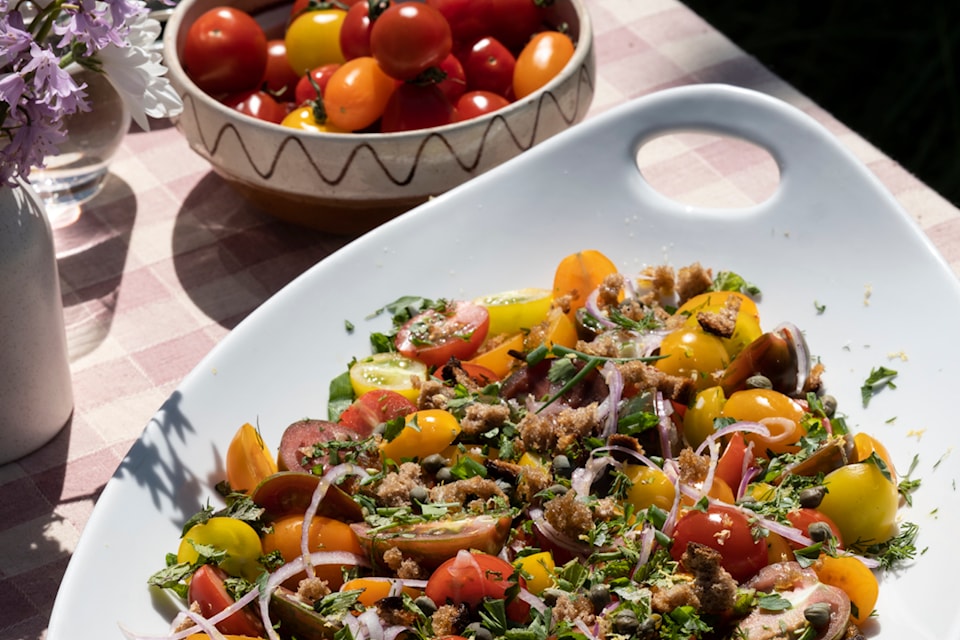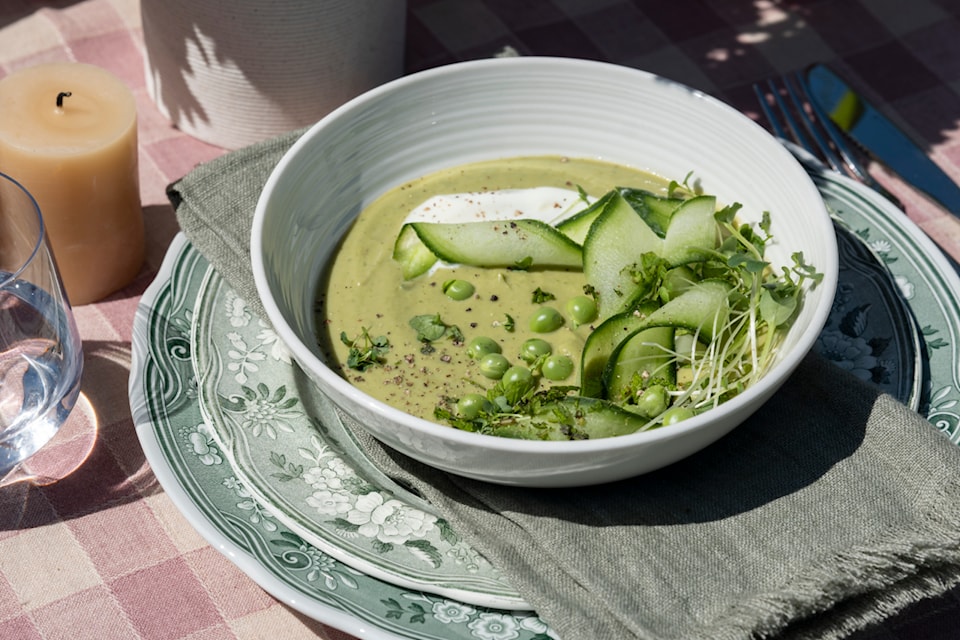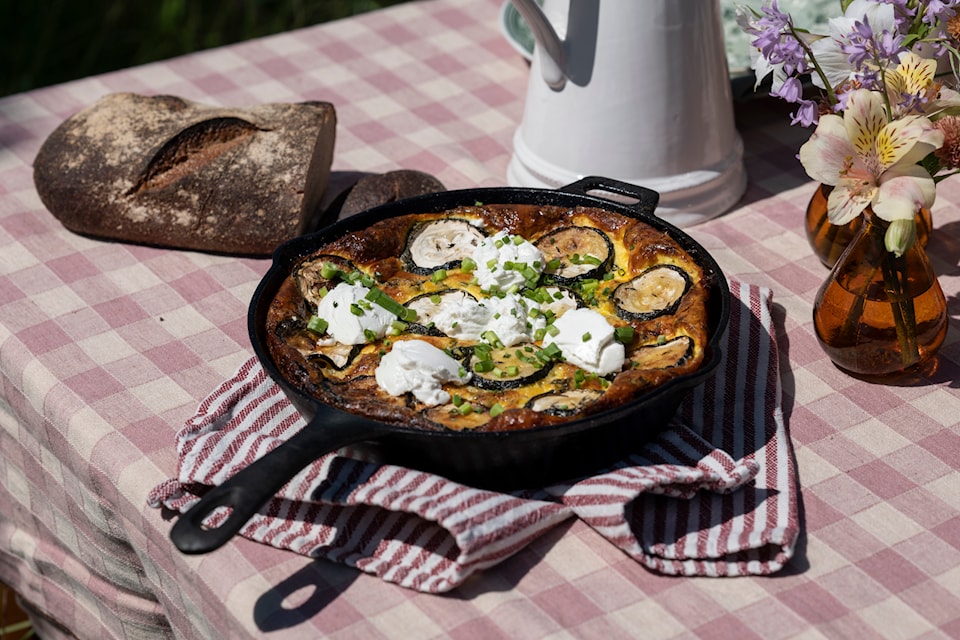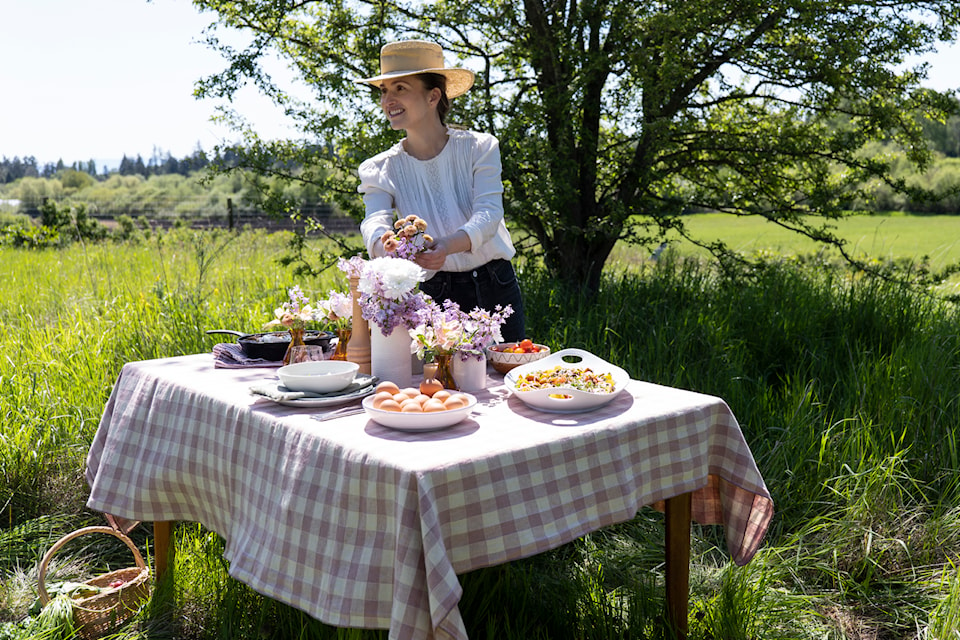Do you know where your food comes from? Where it really comes from? Not which grocery store, country or even city, but which field grew those carrots, which hands picked those tomatoes and which farm and farmer made it possible for you to enjoy your dinner tonight?
While some lucky folks can grow a bit of what they eat in their own backyards, most of our foodstuff comes from farms. An increasing number of these farms aren’t what you might picture: colourful fields of mixed veggies, cows nibbling on fresh green grass, sun-soaked farmers lovingly tending to livestock and seed.
Most of the farms that fuel our food system are industrial mega-machines cranking out as much as possible, for as cheaply as possible, at the increasingly unforgiving expense of nutrient density, regeneration, living wages and employment rights, humane treatment of animals and entire ecosystems, and environmental sustainability. It’s scary and heartbreaking, and a tough thing to troubleshoot as world populations increase and we have to think of ways to feed our global family, especially those with limited access both financially and geographically.
This complex and challenging conversation won’t be fully explored or solved here, but for those of us lucky enough to call British Columbia our home, we have the immense honour and privilege of at least being able to support local farms and farmers.
We are fortunate to live in a climate that enables us to grow a variety of fruits and vegetables, and one that also allows poultry and livestock to graze outside for most, if not all, of the year. There are also some amazing people doing exceptional things with biodynamic and ethically mindful farming practices that are further cultivating and protecting our food systems for long-term sustainability, both in the areas of agricultural regeneration and job safety and security.
Know what’s in season
The first step to supporting local farming systems is simply to know what’s available so you can plan your menus and shopping around what’s fresh and flavourful.
By sourcing locally and in-season, you’ll notice a huge improvement in taste and have the added bonus of greater nutrient density. Fruits and vegetables that must travel a long way are often picked before peak ripeness to keep them from rotting in transit but limiting their ability to develop flavour and nutrient profile.
Know where to find it
Many grocery stores now offer signage that states what country the produce is from. Some label the province, and even the specific farm that provided the item. This can help guide you to make more locally mindful purchases.
If you have access to a car, I highly recommend weekend drives on rural roads and stopping at farm stands and even the local farms if they have storefronts or allow visitors. It’s not only a sweet way to spend a Sunday, but also gives you a firsthand glimpse at our growing systems.
Know the terminology
It’s worth familiarizing yourself with what organic, free-range and grass-fed actually mean, so you can better navigate your purchases.
Organic farming endorses environmentally sustainable and socially responsible practices, with mindfulness for soil regeneration and water conservation. Produce and grains with organic designation are grown without the use of synthetic pesticides, herbicides or fertilizers.
If you’re sourcing dairy, eggs, meat and poultry, you’ll likely come across terms like free-range, grass-fed or pasture-raised. When adhered to properly, free-range should mean that the animal is allowed to roam free in a natural setting, affording it appropriate exercise, fresh air, socializing and access to its natural diet.
Pasture-raised is a similar concept, implying that the animal had access to pastures for things like food, exercise and socializing. Grass-fed is often synonymous with pasture-raised but not always. Sometimes the livestock will only have access to grass for certain elements of their diet but may otherwise be kept indoors and given other forms of food like grains from time to time.
For the most part, however, anything labeled free-range, pasture-raised or grass-fed is not only more ethical and environmentally sustainable, but also more nutrient dense and flavourful than conventional counterparts.
So now that you have a bit more background on how to navigate your farm-fresh purchases, let’s bring it to the table for a fun little feast. Following are some easy and adaptable ways to feature local ingredients, whether you’re hosting a brunch, lunch or even casual summertime dinner. Set up a table outside, gather with loved ones, and celebrate the bounty of summers in B.C.

Tomato + Fresh Herb Salad with Lemony Breadcrumbs
This is one of those non-recipe recipes. Aside from toasting the breadcrumbs, it’s mostly just prep and assembly, which is one of the best ways to enjoy fresh in-season foods.
Tomatoes at their peak ripeness are such a special treat, and I find these “garnishes” elevate and enhance their sun-kissed flavour, and allow the tangy sweetness to really shine.
Ingredients
1 pint assorted cherry tomatoes, halved
½ red onion, thinly sliced
1 slice rustic bread (I used Wildfire Bakery’s sourdough rye)
2 tbsp capers, drained and rinsed
1 tbsp fresh dill, chopped
1 tbsp fresh mint, chopped
1 tbsp fresh parsley, chopped
1 lemon
2 tbsp extra virgin olive oil, divided
Sea salt
Directions
Tear the bread into small pieces and set aside. Heat a medium-sized frying pan to medium heat, and drizzle in some olive oil to lightly cover the pan. Add the bread bits to the pan, as well as a sprinkling of sea salt, and stir occasionally until golden and toasted all over (about 5 minutes).
Remove from the heat and mix with some zest from the lemon (about ½ tsp). Transfer the lemony breadcrumbs onto a plate and set aside.
Spread the tomatoes on a serving platter and gently mix in the shaved onion and capers.
Halve the lemon and squeeze a bit of lemon juice all over everything (about a tbsp), drizzle with olive oil (about a tbsp) and sprinkle some more sea salt over everything.
Top with the breadcrumbs and fresh herbs and serve.

Asparagus + Pea Gazpacho
Served chilled, gazpacho is the ideal summer soup, and an ideal addition to a farm-to-table meal, as you can make it ahead of time, keep it in the fridge and simply dish and serve. While this Spanish soup is most commonly made with tomatoes, the late spring / early summer offerings of asparagus and peas offer a smoother and creamier mouthfeel, while still providing a refreshing addition to warmer weather meals.
Ingredients
1 large bunch of asparagus, woody ends trimmed,
and cut into chunks
⅓ cup shelled peas, plus extra for garnish
1 sweet onion, sliced
½ cup water (or more depending on texture preference)
2 tbsp thick plain yogurt (I used Tree Island Greek yogurt), plus extra for garnish
1 to 2 tbsp olive oil
Salt to taste
2 tbsp fresh mint, chopped, plus extra for garnish
2 tbsp fresh parsley, chopped, plus extra for garnish
1 small cucumber, shaved, for garnish
Microgreens (such as pea shoots) for garnish
Fresh-cracked pepper for garnish
Directions
Heat a frying pan to medium-low heat, add the olive oil and the onion. Sauté until the onion is soft and translucent. Add the asparagus and peas, and about ½ cup of water. Bring the heat up to medium, and cook covered for 5 to 10 minutes, until the asparagus and peas are soft (but be mindful not to overdo it).
Transfer to a high-powered blender, add the yogurt, herbs and a dash of salt. Blend on high until it’s completely smooth and creamy. Season more if needed. Allow it all to cool completely in the fridge until you’re ready to serve.
Garnish with a drizzle of yogurt, a couple cucumber ribbons, a small bunch of microgreens, a sprinkling of fresh peas and herbs and some fresh cracked pepper – and enjoy!

Zucchini and Chèvre Frittata
Frittata is a fantastic way to showcase in-season veggies. While this recipe calls for zucchini, you can really substitute it with other farmer’s market finds such as eggplant or tomatoes. Using fresh eggs and high-quality grass-fed or pasture-raised cheese from local farms will make this great brunch or lunch dish even more special.
Ingredients
2 tbsp olive oil, divided
1 onion, peeled and sliced
1 medium zucchini, sliced into ¼-inch rounds
8 large eggs
1 cup milk (2%)
½ cup heavy cream
About ½ tsp salt
About ¼ tsp fresh-ground black pepper
About 2 tsp fresh thyme leaves
1 tbsp grainy mustard
2 tbsp chives, finely chopped
1 cup shredded cheese (I used Little Qualicum
Cheeseworks Monterey Jill)
1 cup crumbled chèvre (I used Salt Spring Island Chèvre)
Directions
Preheat your oven to 425 F and line a baking sheet with parchment paper. Spread the zucchini rounds evenly on the baking sheet, drizzle with 1 tbsp olive oil, sprinkle with a bit of salt and thyme leaves, and place in the oven. Roast for about 10 minutes until the zucchini is soft. Remove from the oven, set aside, and turn the oven down to 375 F.
Heat a large cast iron pan to medium-low, add the olive oil and onions and sauté until soft, translucent and slightly brown (this may take a while, but it’s worth it for a rich and sweet flavour). Once cooked, remove the pan from the heat.
Meanwhile, whisk the eggs with the milk, cream, salt, pepper and mustard, and then stir in the chives and cheese.
Place the roast zucchini over top of the cooked onions, saving a few for the top (this is just for aesthetic purposes as shown in the photo, so don’t feel like you have to do it this way). Pour the egg mix over the cooked onions and zucchini in the pan, and then place a few leftover cooked zucchini rounds artfully around the top.
Carefully place the pan in the oven (you may want to put it in the same parchment-paper-lined baking sheet you used for the zucchini just to safeguard for any spills).
Bake for 45 minutes to an hour, until the centre is cooked through.
Garnish with extra dollops of chèvre, a sprinkling of chives and/or some fresh cracked pepper and enjoy!

Blueberry Galette with Honey + Chamomile
Galettes are yet another great way to enjoy the bounty of our local farms. Use seasonal berries, apples, peaches or whatever you have on hand, slice, chop or mix for a sweet and juicy centre, or opt for a savoury flavour profile with tomatoes or summer squash.
This dough works well for either sweet or savoury, so have fun with it – galettes are meant to be rustic, easygoing and even a little bit messy.
Ingredients
For the crust…
1 cup unbleached all-purpose flour (I used True Grain Organic BC Untreated White Flour)
½ tsp salt
½ tsp granulated sugar
½ cup cold unsalted butter, cut into ½-inch pieces (I used Avalon Dairy Organic Butter)
1 tsp apple cider vinegar
2 large eggs, divided
Ice water (if needed)
Optional sprinkling of cane sugar
Optional ice cream for serving (I used Parachute Lemon Cream Ice Cream)
For the filling…
2 cups fresh blueberries (frozen is good too, you’ll just need to thaw and drain them first)
¼ cup honey (I used Babe’s Honey Farm Wildflower Honey)
2 tsp fresh lemon juice
1 tsp dried chamomile, finely ground (you can use a handheld coffee grinder or spice grinder to do this)
Directions
Combine the flour, salt and granulated sugar in a large bowl. Add the cold, cubed butter to the flour mixture and work it between your fingers until the dough resembles coarse crumbs and there are no large pieces left. Alternatively, you can use the pulse function on a food processor, taking care not to overwork the dough.
Gently whisk one egg and add it, along with the vinegar, gently kneading the dough with your fingers until it comes together, for no more than a couple of minutes (or you can slowly pulse them in if using a food processor). Form the dough into 6 round discs, wrap and place in the refrigerator to cool for at least 30 minutes.
Meanwhile, preheat your oven to 400 F and line a baking sheet with parchment paper.
Place all the filling ingredients into a mixing bowl and stir gently until evenly combined.
In a small bowl, whisk the remaining egg and set aside for an egg wash.
Dust a clean work surface with flour, and roll each dough disc into circles, about ⅛-inch thick, gently transferring each circle to the baking sheet after it’s rolled out.
Evenly disperse the blueberry mixture in the centre of each circle, leaving about an inch of dough around it. Fold the edges of the dough up and onto itself, one section at a time, and gently brush with a small amount of the whisked egg (do all this as quickly as possible so that the juices don’t soak into the dough).
Sprinkle the galettes with some cane sugar, transfer to the oven and bake for 20 to 25 minutes, or until the crust is golden-brown.
Remove from the oven and allow to cool slightly before serving with ice cream.
This feature appeared in the summer edition of Boulevard Okanagan.



